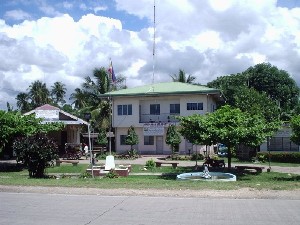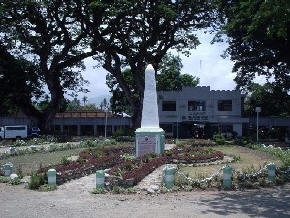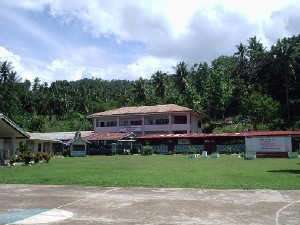The Philippines' self-governing system before the Spanish inquisition was based on a
myriad of groups of people scattered throughout the populated islands, mostly ruled by a
tribal leader. These groups of people were called “Barangays“, a Malay term for
community.
Under the Spanish rule, the same governing
concept was applied to their Filipino subjects, and this was called the “barrio”
system, or wards ( neighborhoods ). Under the present system of government of The
Philippines, the barangay was re-integrated , and is an important part of a city or
province’s make up. In Zamboanga City, a chartered city, the role of the barangay is
much the same as in the past. There are 98 barangays in Zamboanga City, each
headed by a
barangay “captain,” an elected official, operating under the office
of the city mayor and the city council members.
Every barangay has a unique and special makeup of its place, its
people, and its customs, making them a challenging discovery for the more adventurous
spirit. There is intense competition amongst each barangay as to which one organizes the
best fiesta, beautification projects, tourist attractions, cuisine, and many other
cultural aspects. We at Zamboanga.com will provide an avenue for each barangay to showcase
their individuality, making them an integral part of our global community and economy.
We have a web site for each barangay. If you can help
update, please go to the barangay page and click on "Add Valuable
Information".
In the beginning, there was Jambangan (not Samboangan, as others
might insist - it came later as a Spanish inflection to their pronunciation) the ancient place that was settled in the 1200s by the Subanons, who are
considered by historians to be the founding fathers of the place they called the “Land of Flowers.” (interesting historical note:
The mainland of the North American continent was first sighted by the Spanish explorer and treasure hunter Don Juan Ponce de Leon on Easter, March 27, 1513.
He claimed the land for Spain and named it La Florida, meaning "Land of Flowers".) They are of Malayan decent who traveled away
from their homeland in Indonesia to find their new home on the tip of the Mindanao island peninsula. They are a farming-based people who choose to settle along
the banks of the rivers (called suba in their native tongue) and consequently derived their ethnic name from it. The Subanons (“People of the
River”) mostly grew root and tree crops, along with their rice staple, which they still do to this day.
One can only imagine how Jambangan must have looked back then, with its profusion of native vegetation and flowers. It is said that Marco Polo’s ship probably spent
some time exploring the coasts of Mindanao and Sulu in 1292 while waiting many months on the coast of Sumatra, Indonesia for a favorable monsoon to deliver a royal
bride from the court of Kublai Khan, a grandson of Genghis Khan and supreme leader of the vast empire of Mongolia (1215-94), to the Khan of Persia and may have made
contact with the new inhabitants of the region. The monsoons around this area of Southeast Asia were constant and reliable, well known to all the seasoned
mariners and widely credited for the profusion of early commerce in the area.2
The Chinese have historical documentation of trade between the Malayan
transplants who occupied the Sulu Archipelago and their residents, mainly from
the
Fujian, or Fukien, Province that started during this century
and continued on to this day. Astoundingly, Filipino archivist credit this
era's Chinese connection with Fujian as the sole contributor to the lineage of
ninety percent (90%) of Chinese-Filipino (Chino-Pinoy or ChiNoy) ancestry.
The trade monopoly between Fujian, China and The Philippines, especially
with the early Malay settlers who congregated in the Sulu Archipelago region, is
a testament to the very strong position ancient Jambangan enjoys today as the
international business trade center for all of south-western Mindanao and the
Sulu Archipelago.
NOTE:
Koxinga
(see 1600s A.D.) is from Fujian and his threat to Spanish rule in the
Philippines reflects this ancient trade monopoly.
 1300s A.D. – The Malayan influx
1300s A.D. – The Malayan influx
Then came the Badjaos and the Samals from Malayan decent who settled along the Jambangan shoreline in the 1300s.
They made contact with the founding Subanons who told them the namesake of their newfound home. The new settlers however preferred to call it Samboangan,
which to this day is what they sentimentally call it. However, those who still insist on referring to Samboangan as the original name of Zamboanga City are subject to debate
of loose historical facts. One can only imagine the migration route that was founded by the Malayan settlers into Jambangan and Mindanao, and the trade route that ensued
along the Sulu Archipelago between them, Malaysia, Indonesia, Brunei, and the traders from the Middle East, India, China, and Japan who were plying the waters of this area.
The Tausugs came next along with the Yakans, both of Malayan decent also. The Tausugs eventually became the most dominant and
aggressive ethnic group of the entire region, establishing their own Sultanate based in the island of Jolo,
Philippines, and was part of the bigger Sultanate of Brunei in
north Borneo, a thriving trade center of more than 70,000 people. The world at this time was in a trading frenzy and the Malays were leading the way to new products,
commerce, and exotic shores, and Jambangan was a contributor to this trade activity.
The Badjaos, Samals, Tausugs, and Yakans from Malaysia and Borneo/Brunei still consist a big majority of the minority group that make up today's area
population. On the other hand, the founding Subanons of Indonesia have long moved their nucleus onto the hinterlands of the Mindanao Island peninsula to pursue their
ancient ways, leaving behind only a semblance of their numerous presence. One can catch a glimpse of what it must have been like in the early days by visiting their
mountain home today. The Yakans would choose to establish themselves in the island of Basilan, with a small thriving community present here today. The Badjaos
are a sea-faring tribe in its truest sense and can be seen scattered around the Sulu Archipelago, but have a loose foothold on residency here.
Read
More.....








